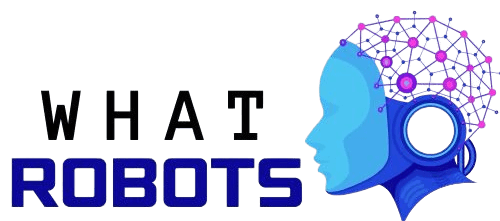Modern vehicles are filled with advanced technologies designed to enhance performance, safety, and efficiency. One such innovation is the electronic throttle control (ETC) system—often referred to as a “drive-by-wire” system. Unlike older cars where a physical cable connected the accelerator pedal to the throttle body, many modern cars rely on electronic sensors and actuators to manage engine power.
Table of Contents
When something goes awry with this system, you may see an electronic throttle control light illuminate on your dashboard. In this article, we’ll explore what that light means, why it appears, how the ETC system works, and the steps you can take if it comes on. By the end, you’ll have a comprehensive understanding of this critical component of modern vehicles and how to maintain it for optimal performance.
What Is Electronic Throttle Control?
Electronic throttle control is a technology that replaces the traditional mechanical linkage (a cable) between the accelerator pedal and the throttle body. Instead, it relies on a drive-by-wire system involving sensors, an electronic control unit (ECU), and an actuator (motor) controlling the throttle plate. When the driver presses the accelerator pedal, signals from the pedal’s sensors are sent to the ECU, which calculates how much power the engine should deliver. The ECU then activates the throttle actuator to open or close the throttle plate accordingly, regulating air intake and thus engine speed.
Key Benefits of ETC
- Better Fuel Efficiency: The engine’s airflow is optimized for different driving conditions.
- Smoother Acceleration: ETC can quickly and precisely adjust throttle position for improved drivability.
- Reduced Emissions: By integrating with other vehicle systems, ETC can help maintain lower emissions.
How the ETC System Works
- Pedal Position Sensor
When you press the gas pedal, a sensor (often a potentiometer or Hall-effect sensor) measures the pedal’s angle and sends this data to the ECU. - ECU Analysis
The vehicle’s engine control unit (ECU) processes multiple inputs—pedal position, engine speed, temperature, and more—to determine the ideal throttle position. - Throttle Actuator
A small electric motor or actuator in the throttle body opens or closes the throttle plate based on the ECU’s commands. - Feedback Loop
A throttle position sensor (TPS) on the throttle body continuously reports the plate’s position back to the ECU, ensuring precise alignment between your pedal input and the engine’s response.
This real-time loop allows for smooth and efficient control, adjusting instantly as driving conditions change.
Why the Electronic Throttle Control Light Comes On
The ETC light on your dashboard (often resembling a lightning bolt, or a text reading “ETC”) illuminates when the vehicle’s computer detects irregularities in the throttle control process. This light serves as a warning that something might be wrong with one or more of the components—whether it’s the pedal position sensor, the throttle actuator, related wiring, or even software issues within the ECU.
Typical Triggers
- Sensor Malfunction: If the pedal position sensor or throttle position sensor reads out-of-range values, the system flags an error.
- Actuator Issues: Faulty actuators can’t open or close the throttle plate accurately.
- Electrical Problems: Loose connections, damaged wiring, or a blown fuse can disrupt signal flow.
- Software/Programming Errors: ECU calibration or firmware hiccups may cause inconsistencies in throttle response.
Common Symptoms and Indicators
Beyond the illuminated ETC light, you may notice additional signs that your throttle system is compromised:
- Sluggish Acceleration
The vehicle might be slow to respond when you press the gas pedal, indicating an issue with the throttle actuator or sensor feedback. - Unsteady Idling
An erratic idle or rpm fluctuations can suggest that the throttle plate isn’t adjusting correctly at low engine speeds. - Poor Fuel Economy
A malfunctioning ETC system might introduce more air than necessary or fail to optimize engine output, leading to reduced fuel efficiency. - Reduced Power or “Limp Mode”
Many cars revert to a limp mode to protect the engine when a critical error is detected. This drastically limits speed and acceleration until the issue is resolved. - Stalling or Surging
If the throttle control is severely compromised, the engine may occasionally stall or surge, especially during low-speed maneuvers.
Potential Causes and Diagnosis
1. Sensor Malfunctions
Pedal Position Sensor: Over time, sensors can degrade, providing inaccurate voltage signals.
Throttle Position Sensor: Dirt, grime, or mechanical wear in the throttle body can cause the sensor to relay faulty data.
2. Mechanical Wear
Throttle Plate/Bearing: Excessive carbon buildup can impede the throttle plate’s movement.
Actuator Gears: Cheap plastic gears can strip, or the motor might fail altogether.
3. Electrical and Wiring Issues
Corrosion or Moisture: Water ingress near connectors can cause erratic signals.
Loose Connectors: Vibrations over time can loosen wiring harnesses.
4. ECU/Software Problems
Glitches or Corrupted Data: Outdated firmware may conflict with new sensor calibrations.
Diagnostic Steps
- OBD-II Scan: Pulling fault codes is often the first step, helping isolate whether it’s a sensor, actuator, or wiring problem.
- Visual Inspection: Checking the throttle body, wiring, and connectors can catch obvious physical damage.
- Multimeter Tests: Sensor outputs and continuity tests help confirm or rule out electrical issues.
Steps to Take When the ETC Light Is On
- Pull Over Safely
If the light appears while driving, find a safe spot to stop. Continuing to drive with a potential throttle issue could be risky. - Check for Other Indicators
Look for additional warning lights like the check engine light or traction control light. These can provide clues about the broader system health. - Restart the Vehicle
Sometimes, a transient glitch may trigger the ETC light. Turning off the car and restarting might clear the immediate error—though persistent issues will likely return. - Scan for Codes
Use an OBD-II scanner or seek a professional to read diagnostic trouble codes (DTCs). This step is vital for accurate troubleshooting. - Seek Professional Inspection
If you lack the tools or expertise, consult a mechanic. A certified technician can conduct a thorough inspection, test sensors, and address underlying causes.
Prevention and Maintenance Tips
1. Clean the Throttle Body
A build-up of carbon deposits can restrict the throttle plate’s movement. Periodically clean the throttle body (using a specialized throttle cleaner) to keep it free from debris.
2. Maintain Wiring
Check your wiring harness for frayed or corroded connections, especially around the throttle body and pedal sensors. Early detection can save you from more extensive damage.
3. Use Quality Fuel and Filters
Cheaper fuels can leave heavier deposits. Additionally, replacing your fuel and air filters at recommended intervals helps maintain overall engine health.
4. Update ECU Software
Keep your vehicle’s firmware up to date, especially if there have been known issues or recalls related to throttle control.
5. Follow Scheduled Service
Regular oil changes and tune-ups ensure that all engine-related components—including the ETC system—run optimally.
When to Seek Professional Help
While certain minor fixes (like cleaning the throttle body) might be manageable for experienced DIY enthusiasts, other tasks require specialized knowledge:
- Replacing Sensors: Installing a new pedal or throttle position sensor may need calibration.
- Adjusting the Throttle Actuator: Improper alignment can exacerbate performance issues.
- ECU Reprogramming: Flashed or reprogrammed software must match the vehicle’s specific engine and transmission setup.
A professional mechanic or dealership with the right diagnostic equipment can ensure that repairs are both accurate and guaranteed under warranty, if applicable.
Future of Electronic Throttle Control
Automotive technology continues to evolve rapidly, and ETC systems are no exception:
- Increased Integration: ETC is likely to work more closely with advanced driver-assistance systems (ADAS), including self-driving functionalities.
- Electrification: In electric and hybrid vehicles, software-based torque management systems may eventually surpass mechanical designs.
- Over-the-Air Updates: Some newer models already use wireless connections to update engine management software, potentially fixing throttle-related issues without a service center visit.
As the push toward greater autonomy and efficiency grows, ETC’s role will only expand, making reliability and real-time performance even more critical.
Conclusion
An illuminated electronic throttle control light shouldn’t be ignored, as it can signal anything from a minor sensor hiccup to a more significant mechanical or electrical problem. The ETC system is a vital component that not only contributes to your car’s performance but also ensures smoother, safer driving. By understanding how ETC works, recognizing warning signs, and following proper maintenance procedures, you can prolong the life of this system and keep your vehicle running at its best.
If the ETC light does appear, remember: gather diagnostic trouble codes, perform a visual inspection, and address the root cause quickly. When in doubt, consult a professional mechanic who can ensure your drive-by-wire system remains responsive and efficient.
To learn more about throttle control systems, diagnostic procedures, and safe vehicle operation, visit the National Institute for Automotive Service Excellence (ASE) website. They offer resources and certification information for professionals, as well as educational materials for vehicle owners interested in automotive technology.

